 By KEVIN WEAKS
By KEVIN WEAKS
The year 2019 was the end of the line for some notable Ford and General Motors sedans. Among them are the Ford Taurus and Focus, the venerable Chevrolet Impala and the compact Chevrolet Cruze.
While the Impala has been with us so long that it transcends generations of car buyers, and the Taurus was once the best-selling sedan in the whole USA, the Cruze is a relative newcomer. I attended the St. Louis debut of the Cruze in 2011 (and have the T-shirt to prove it). Seven years ago the Cruze was among the top-selling Chevrolet vehicles to those under 25. “The impact of the Chevy Cruze can’t be overestimated,” said Edmunds.com at the time. “This small economy sedan has made Chevrolet a brand to consider when comparing to Japanese rivals which have dominated the market until now.”
In 2013 the Ford Focus was the best-selling car in the world, even beating out the Toyota Corolla. Now it has been discontinued.
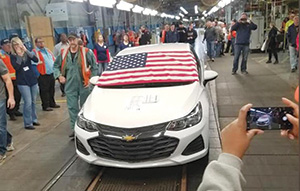
WHAT CHANGED?
Well, for one thing, gas prices went down. Subsequently, sales of SUVs and pickup trucks went up. The buying public’s growing penchant for trucks and SUVs has overtaken small and medium-sized car sales to such an extent that American factories are closing or retooling to build more-profitable truck-based vehicles.
Experts forecast that in a couple of years less than 35 percent of new car sales will be passenger vehicles and more than 65 percent will be trucks and SUVs. CNBC reports that by 2022, 84 percent of General Motors vehicles sold in the U.S. will be a truck or SUV. For Fiat Chrysler that ratio is predicted to be 97 percent, and for Ford 90 percent. It may stay that way for some time. Consumers who go from a sedan to a crossover tend not to return to a smaller car unless there is an economic reason, like gas prices.
Dodge and Chrysler were the first brands to dump small and mid-size sedans from their lineups, reports Forbes magazine. Fiat Chrysler already announced plans to end its car production in the U.S. back in 2016. It ceased the production of its Chrysler 200 and Dodge Dart cars, the only two cars it made in the U.S., with the goal of focusing on pickups and SUVs for its Ram and Jeep brands.
SAY GOOD-BYE TO THESE
With some admitted sadness, here’s a look at the automotive nameplates that have gone away or won’t be around much longer:
-
Buick LaCrosse – The large LaCrosse sedan was set to be refreshed for 2020, but Buick decided it would be better off concentrating its efforts on crossover SUVs. The LaCrosse lives on in some markets, China most notably. It even received a facelift for the 2019 model year. But in the U.S. the large sedan disappears after almost 15 years on the market. That would have left the Regal as Buick’s only remaining passenger car, but it is going away as well (read on). Also discontinued is the Polish-built Cascada convertible.
-
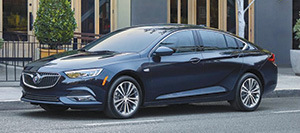
BUICK SAYS IT WILL END production of the Regal, its last remaining sedan and only station wagon, after the 2020 model year. Buick will offer three SUVs instead. Buick Regal – Buick says it will end production of the Regal, its last remaining sedan and only station wagon, after the 2020 model year. Buick acknowledged to Motor Authority that buyers clearly prefer crossovers and SUVs and that most of the company’s 2019 sales have come from those models. “Buick continues to be ahead of the consumer shift toward SUVs. In fact, nearly 90 percent of Buick sales to date this year have been crossovers,” a GMC spokesman said.
-
Cadillac CTS, XTS and ATS – The slow-selling midsize Cadillac CTS will go out of production this month in favor of the new CT5 sedan. Ditto for the Cadillac XTS, introduced for the 2013 model year and replacing Cadillac’s STS and DTS models. The full-size XTS sedan eventually became the only front-drive sedan (with all-wheel drive optional) in what fast became a rear-drive luxury car lineup. The final XTS rolled off the assembly line in October.
Like the late but not lamented Buick Cascada convertible, the ATS Coupe is finding that the market for two-door models is getting smaller and smaller. While the Coupe has outlasted the ATS sedan, it goes away as Cadillac looks to the new 2020 CT4 sedan as the division’s entry-level model. -
Chevrolet Cruze – GM had high hopes for the Cruze after the Recession. The domestic automakers were going all in on small cars, especially premium-equipped models for Baby Boomers who wanted to downsize their rides but keep the creature comforts. Those brands are now betting heavily on trucks and SUVs. As it is, the Cruze had a nice 10-year run, standing up to segment leaders like the Honda Civic and Toyota Corolla. The Cruze had comfortable seats, a smooth ride and a long standard features list. While the Lordstown, Ohio, Cruze assembly is now closed down, a hatchback version is still built in Mexico.
-
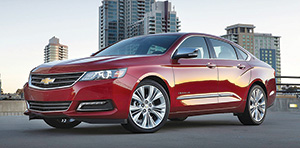
PRODUCTION OF THE 2020 Chevrolet Impala ceased in January. Introduced in 1958, The Impala was Chevy’s largest sedan and offered stylish good looks and plenty of space for a family. Chevrolet Impala – Production of Chevrolet’s largest car will cease this month, and even though the Impala is not the brand’s lowest-volume model, sales are at a fraction of what they were in the vehicle’s glory days. The Impala, introduced in 1958, is a smooth and quiet sedan with plenty of space for a family. Its 18.8-cubic-foot trunk is also one of the roomiest on the market and its front seats are said to be the comfiest and widest of any sedan. Folks who need a little more tushy-room now may be forced to step up (literally) to an SUV or pickup.
-
Chevrolet Volt – Debuting in 2010, the Chevy Volt seemed like the car of the future. Officially an extended-range electric car, it was the first model to feature a small gasoline engine that would run a generator to power the car’s motor when the onboard battery pack became depleted. The second-generation Volt, introduced in 2016, can run for 53 miles before the gas engine kicked in, which for many owners rarely ever happened. Sales have been shrinking, so Chevy is pulling the plug on the Volt, but the platform could see duty on a future plug-in crossover SUV.
-
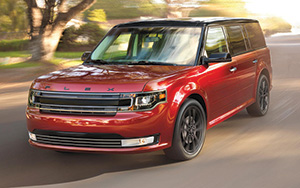
FORD HAD HIGH HOPES when it launched the Flex three-row crossover in 2008. It was one of the first crossovers on the market to offer three rows of seats and lots of interior space in general. It was discontinued in 2019. Ford Flex – Similar in styling to the late Honda Element and Scion xB, Ford’s Flex, which came out in 2008, was the biggest “box car” of them all. Ford had high hopes when it launched the Flex three-row crossover. It was one of the first crossovers on the market to offer three rows of seats and lots of interior space in general. Today, automakers are scrambling to get three-row crossovers on sale as fast as possible. Built on the D4 platform it shared with the later Explorer and Taurus models, much of its engineering can be traced back to Volvo, which Ford owned for a while. “People who own the Flex love it, but it became almost a cult vehicle and the numbers were just too small,” said Michelle Krebs, an analyst at car-buying site Autotrader.
-
Ford Focus – In one fell swoop, Ford killed off its entire car lineup (minus the Mustang), and the Focus, though one of the best-selling vehicles in the Blue Oval’s lineup, was not immune. The midsize Ford Fusion is planned to morph into a crossover-like station wagon with its coming redesign. Available as a sedan or a hatchback, the Focus offered satisfying handling and a quiet and smooth ride on the highway. The Focus ST is a performance-oriented model that comes with a powerful turbocharged engine and a six-speed manual transmission. Also going away is the teeny foreign-built Ford Fiesta.
-
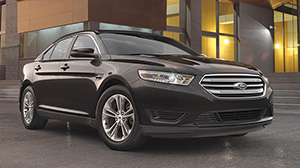
OVER EIGHT MILLION Ford Tauruses were built before Ford ceased production last March. When the full-size Ford Taurus sedan was introduced for the 1986 model year, it was a groundbreaking vehicle. The 2019 model is shown here. Ford Taurus – When the full-size Ford Taurus sedan was introduced for the 1986 model year, it was a groundbreaking vehicle that came wrapped in what was then dramatically rounded styling. The car was briefly renamed as the Five Hundred in 2005-2007 before Ford got smart and returned its original nameplate. Police departments loved them. The Taurus was the best-selling car in the U.S. between 1992 and 1996, though sales have since dropped off dramatically.
The last 2019 Taurus rolled off the assembly line in March but the legacy lives on as Ford invests $1 billion and adds 500 jobs at its Chicago Assembly Plant and Chicago Stamping Plant to expand capacity for the production of all-new Ford Explorer, Police Interceptor Utility and Lincoln Aviator. -
Lincoln MKC and MKT – The compact Lincoln MKC crossover SUV will be redesigned and renamed the Corsair for 2020. The three-row MKT crossover ends with the 2019 model year. Its slot in Lincoln’s lineup will be filled by the far more stylish and capable Aviator, the first model on a new platform that will be shared with the 2020 Ford Explorer. The 2020 Aviator glides into Lincoln’s lineup between the full-size Navigator and the smaller two-row mid-size Nautilus.
THE END OF THE LINE?
GM’s decision to take Buick out of the sedan market and only offer SUVs could mark the beginning of the end of the 115-year-old brand. When GM went through bankruptcy a decade ago and retired Saturn, Pontiac, Saab and Hummer, it was also suggested to send Buick to the automotive graveyard along with Mercury, Oldsmobile, Plymouth, Hudson, Studebaker, AMC, LaSalle and other nameplates that have taken that sentimental journey.
You also might watch out for Chevrolet’s Camaro, rumored to cease after the 2023 model year. Hope not. That would leave only the Mustang as the only surviving original pony car.
(Contact Kevin Weaks at kweaks@labortribune.com.)

